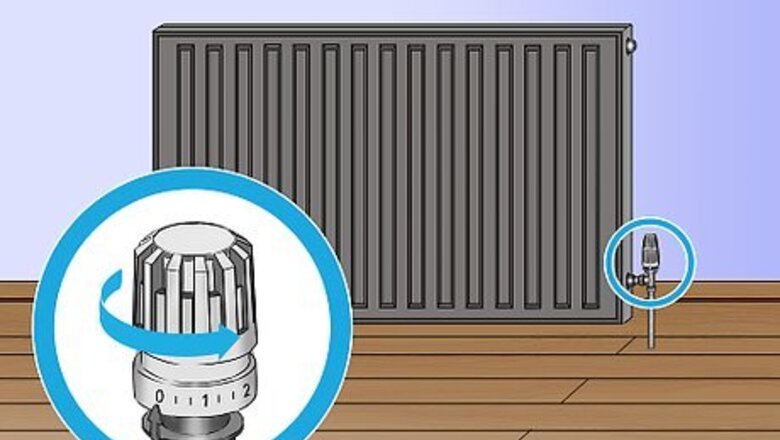
views
Operating a Radiator’s Controls
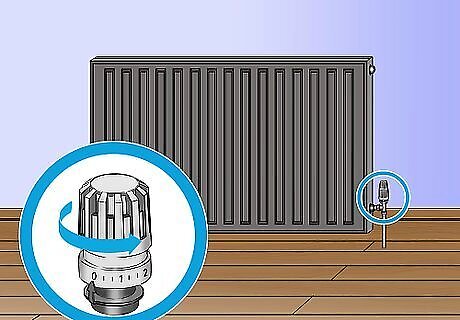
Turn the radiator dial counterclockwise to turn it on. The control valve is located near the bottom of most radiators. On a steam radiator, it is the valve on top of the pipe leading into the radiator. It will look like a small, rounded cap. Turn it as far as possible to activate the radiator. This smaller valve controls the flow of water in traditional steam radiators. Turning the dial clockwise shuts it off. There is no in-between setting. Modern electrical radiators often have control panels instead of dials. Press the “on” button to start the radiator, then use the panel to adjust the heat setting.
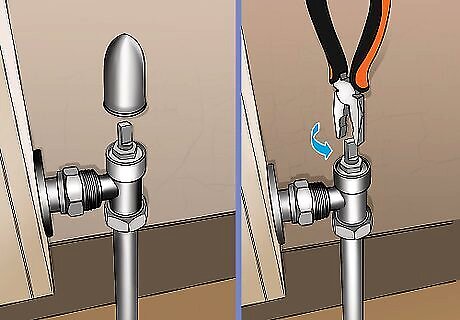
Use pliers to turn on the radiator if it has a lockshield cap. Some caps aren’t connected to the valve itself. Test this by pulling the cap up. If it pops off easily, you will need to turn the valve manually. Grip the metal valve with the pliers, then turn it counterclockwise to activate the radiator. Replace the cap after turning the radiator on. Some lockshield caps are held in place with a screw. If you see a screw on the top of the cap, turn the screw counterclockwise to loosen it and remove the cap.
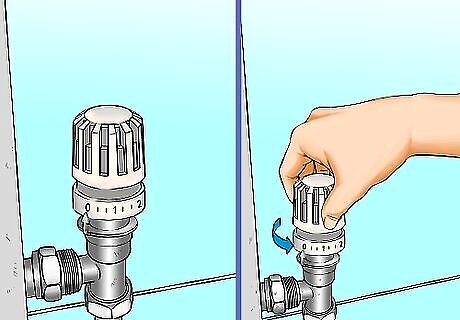
Spin the thermostatic valve to control the radiator’s temperature. Look on the opposite side of the radiator for a second valve. The thermostatic valve usually has a taller cap with numbers ranging from 0 to 5. It’s like a dial on any other type of heater. Turn the valve counterclockwise to increase the heat and clockwise to reduce it. The thermostatic valve controls the amount of heat escaping the radiator. Setting it at 0 prevents heat from escaping, but it doesn’t turn off the water or electrical flow. Old radiators may not have a thermostatic valve. You will see a vent valve, sometimes with an adjustable component. These radiators aren’t designed for heat control, so consider having a professional install a thermostatic valve.
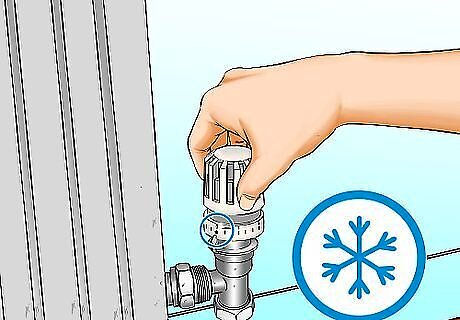
Use the frost setting to prevent the radiator from freezing. The frost setting is represented by an asterisk or snowflake symbol on the thermostatic control. It is usually between 0 and 1 on the valve. If you are away from home during a period of freezing weather, turn on the frost setting to protect the radiator from damage. The frost setting keeps the radiator at a low heat level so the liquids inside of it can’t freeze. The radiator functions like any other water pipe in your home. Ignoring it can lead to a burst pipe and a big repair bill.
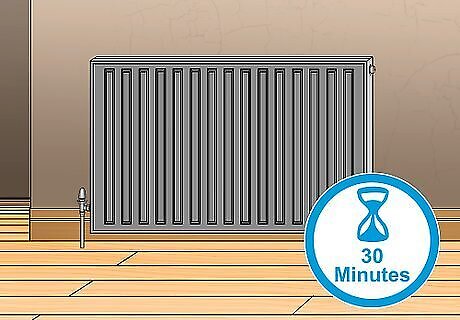
Wait up to 30 minutes for the radiator to heat up. Radiators do take time to heat up. Many people make the mistake of turning the thermostatic dial up too high, then turning it down too low once they feel the heat. Keep the dial at a consistent middle setting and adjust it as needed after the radiator gets into gear. Water radiators take longer to warm up than electric ones. Expect electrical radiators to take about 10 minutes to reach full efficiency. Remember that every radiator needs time before it begins working the way you want. The water or oil heats up first, then the heat radiates throughout the room.
Turn off the radiator by twisting the control valve clockwise. No matter what type of radiator you have, use the control valve to turn it off. It is the valve that controls the water flow to standard radiators. For electric radiators, press the off button on the control panel to shut off the radiator’s power supply. Turning a thermostatic valve will not shut off the radiator all the way. Use the thermostatic valve to control the temperature, but always go to the control valve to stop the radiator from emitting heat.
Fixing a Radiator Not Emitting Heat
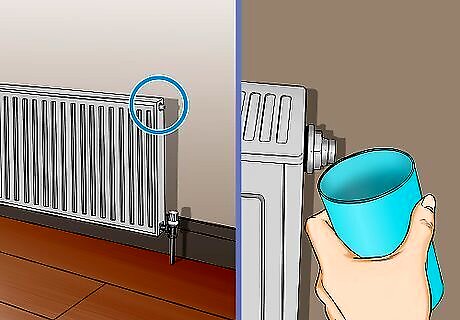
Place a pan underneath the bleed valve. Look along the radiator’s sides for a small valve closed off by a metal nut and screw. It will be near the top. This valve leaks water when you remove it to let out steam, so have a small container nearby. Turn off the radiator before attempting to open the valve. Make sure it feels cool to the touch.

Open the valve by turning a radiator key counterclockwise. A radiator key is a small wind-up tool, usually made of brass. Set the open end in the center of the valve, then give the key a half-turn. Leave the key in place as the air begins to leak out of the radiator. Radiator keys are available online or at some home improvement stores. Some radiators can be opened with a flathead screwdriver. Try to twist the screw a little. If it doesn’t open, switch to a radiator key.
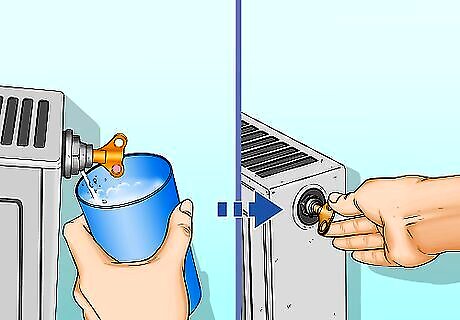
Close the bleed valve after water begins flowing out of it. Let the air hiss out of the bleed valve. Eventually, water will spurt out with it. Quickly turn the valve clockwise until the flow stops. Then, turn on your radiator to test it. If you have multiple radiators in your home, take the time to bleed all of them. Do this at least once a year to keep them all in working order.
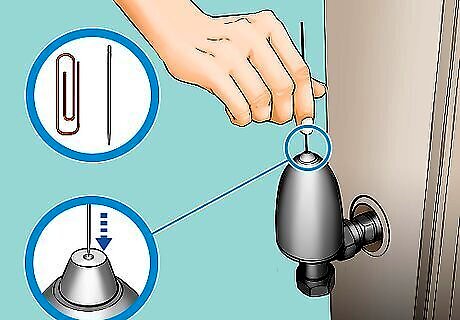
Clear out the air vent if bleeding the radiator doesn’t fix it. Find the small metal valve sticking out of the radiator’s side. If you have a thermostatic valve, the control knob will be on top of it. To clear it out, stick a piece of wire into it. Rotate the wire to scrape away any mineral buildup around the vent hole. Use a paperclip to easily clear out the vent. Straighten the clip out and push the end into the hole. Coat hangers and sewing needles are a few other options that work well. Painters often inadvertently cover the vent. If you painted your radiator recently, cut away any obstructing paint with a wire, a small knife, screwdriver, or another tool.
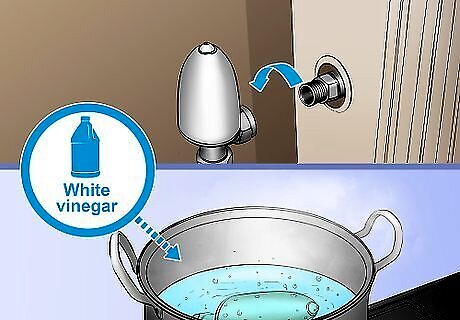
Boil the valve in vinegar to clean it if necessary. Make sure the water supply valve on the opposite side of the radiator is turned off. Then, twist the vent counterclockwise to remove it. Set it in a pot on the stove, cover it with white vinegar, then boil it for about 30 minutes. Reinstall the valve and test the radiator again. If the valve still doesn’t work, purchase a replacement online or at a home improvement store.
Improving Heating Efficiency
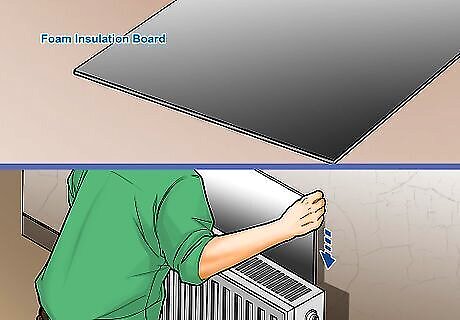
Install a foam insulation board to trap heat in the room. Poor insulation in the wall leads to a cold room even when your radiator works properly. Choose an insulation sheet covered with aluminum on 1 side. Set the sheet against the wall with the aluminum side facing the radiator. It isn’t a pretty solution, but it’s better than trying to fix an entire wall in the middle of winter. Make your own insulation instead of buying it. Use a utility knife to cut a piece of foam insulation at least to the size of the radiator. Then, glue aluminum foil to it. The insulation trick works for nearby doors and windows letting in drafts as well. The insulation absorbs the heat and redirects it back into your room.
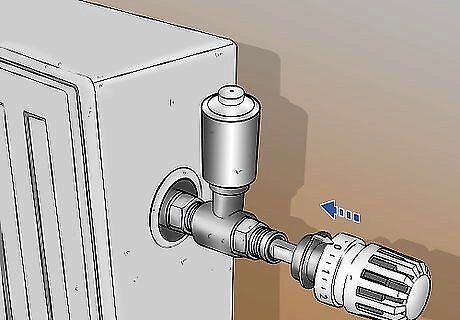
Install a thermostatic valve on the vent if you have a 1-pipe system. Most radiators have a single pipe that transports both cold and hot water. These systems often have a small vent valve that doesn’t provide much heat control. Contact a heating expert or plumber to have them install the new valve over the vent. It makes your radiator much more efficient. Expect to pay between $200 and $300 USD for the installation. The valve reduces your heating bill, so it is well worth the cost.
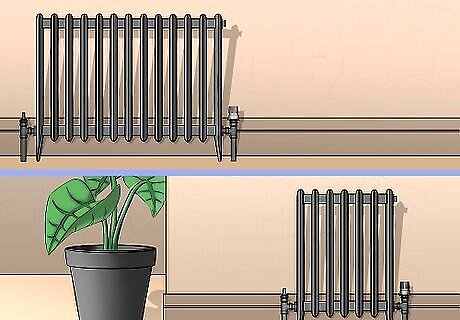
Choose a different radiator size if your radiator is inefficient. The radiator size you need depends on many different factors unique to your home. First, pick the room you wish to heat, then calculate how big the area is. A 15 in × 23 in (38 cm × 58 cm) bedroom benefits from the smallest radiator possible, while bigger areas like living rooms require something larger and stronger. Room features make a difference. Radiators lose heat to outside walls, poor insulation, or doors and windows. Carpets and furniture absorb heat, keeping it in the room.
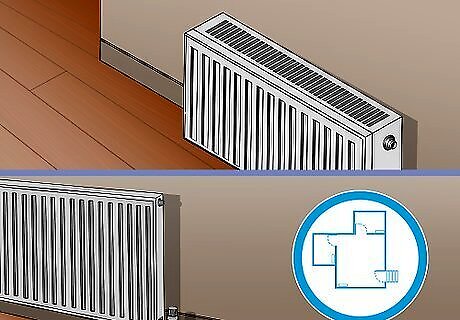
Install an extra radiator to heat up larger rooms. Every room needs a separate radiator to heat it. Some rooms need extra help to keep warm. Set the radiators on opposite walls, for instance, and feel the cold spots disappearing as heat flows towards the center of the room. Using multiple radiators eliminates the need for large, bulky radiators.
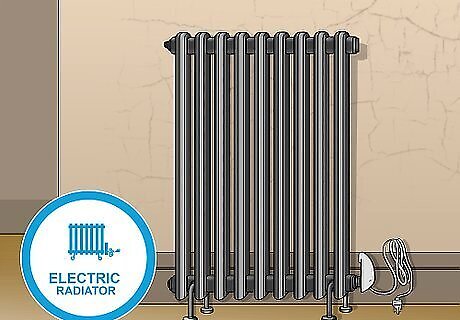
Plug in an electric radiator for portability. Most modern radiators are electric. Electric radiators use oil as a heat source and require next to no maintenance. They are efficient and warm up quickly. In addition, modern electric radiators are often portable, so all you need is an outlet to operate them. If your home has a steam radiator, you will probably be stuck with it unless you are ready to remodel your home. Steam radiators are similar to electric ones but have to be attached to a water line in your home.













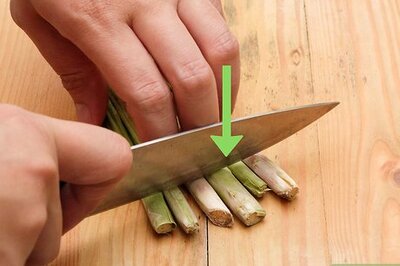






Comments
0 comment